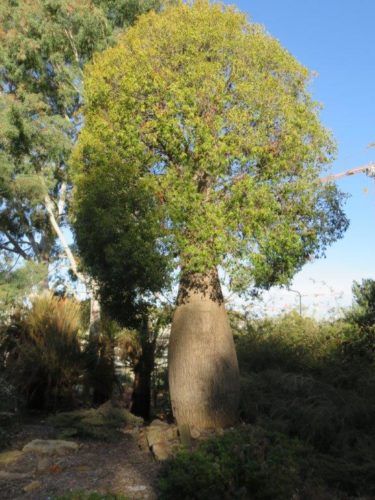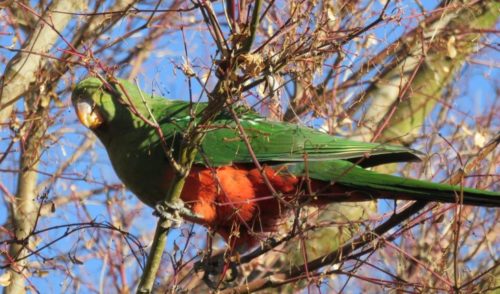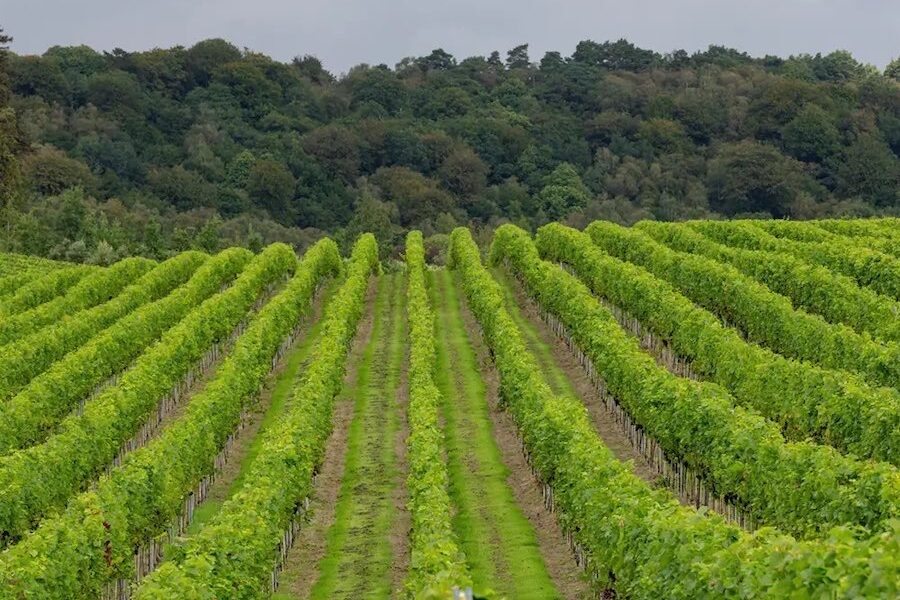Gardening columnist CEDRIC BRYANT celebrates the spectacular bottle tree.

THERE’S no better time to go for a walk in the Australian National Botanic Gardens, now that it’s open again.
At the entrance gates is the beautiful bottle tree, Brachychiton rupestris from Queensland, which is always of special interest.
Even more spectacular is the Adansonia Gregorii, or boab, from the Kimberley region of Western Australia. The gregorii is named after one of Australia’s great explorers, Sir Augustus Charles Gregory (1819-1905). Born in England and migrating with his parents to the new Swan River settlement in Western Australia, he led four major expeditions exploring and opening up parts of WA, mainly north of Perth.

Boab trees are also found in Africa and Madagascar. The name is a derivative of the Arabic word baobab. One myth is that the bulbous trunk is full of water – not so, although these have an amazing capacity to withstand drought. Some of these trees are huge, with trunks recorded up to five metres in diameter. It is one of only a few native plants that are deciduous, losing its leaves in the cold winter months. Most parts of the tree are edible, and the leaves are used by indigenous people medicinally. An 1889 book entitled “Useful Native Plants” quotes “the dry acidulous pulp of the fruit has an agreeable taste like cream of tartar”. An interesting article in “Australian Geographic” (3/7/19) explores its possible African connection.
BACK to everyday gardening, with hints on growing rhubarb. Its origin is obscure, grown centuries ago in China, Russia and Turkey. Historically it was considered more valuable than cinnamon, saffron and opium. The stalks are the edible part, while the leaves are poisonous and must not be eaten, even when cooked, and should not be given to stock or chickens.
The Chinese treatise “The Divine Farmer’s Herb-Root Classic” from 1800 years ago mentions rhubarb for medicinal purposes. In Scotland it was first grown as an edible plant in the Edinburgh Botanic Gardens in 1786. It is considered a cool-season perennial with the best stem colour when the temperatures dip down to -10C, hence ideal for this area.
Rhubarb is best planted as a crown in an open, sunny position and can be left for four to five years, after which it is best divided and planted in fresh soil. The ground should be well dug over with plenty of animal manure worked into the soil before planting. Feed regularly with liquid manure or liquid certified organic seaweed. Now is an ideal time to plant, with the crowns just under the surface planted about 90cm apart. Cut off any flowering shoots and at harvest do not cut the stems, but rather gently pull from the crown. Do not remove any more than half of the stalks at any one time.

BIRDS can be fussy eaters, as evidenced in our garden. We have several Japanese maples including Acer “palmatum”, A. “Trompenburg”, A. “Bloodgood” and others. However, sitting at my desk looking out of the window, the magnificent king parrots were only interested in the seeds of A. palmatum. An advance party of two arrived for a couple of days. Then they came in force, with at least 15 stripping the seeds off the tree. What a sight! Also they only ate the seeds on the tree, with no interest in any seeds fallen to the ground.
Who can be trusted?
In a world of spin and confusion, there’s never been a more important time to support independent journalism in Canberra.
If you trust our work online and want to enforce the power of independent voices, I invite you to make a small contribution.
Every dollar of support is invested back into our journalism to help keep citynews.com.au strong and free.
Thank you,
Ian Meikle, editor




Leave a Reply